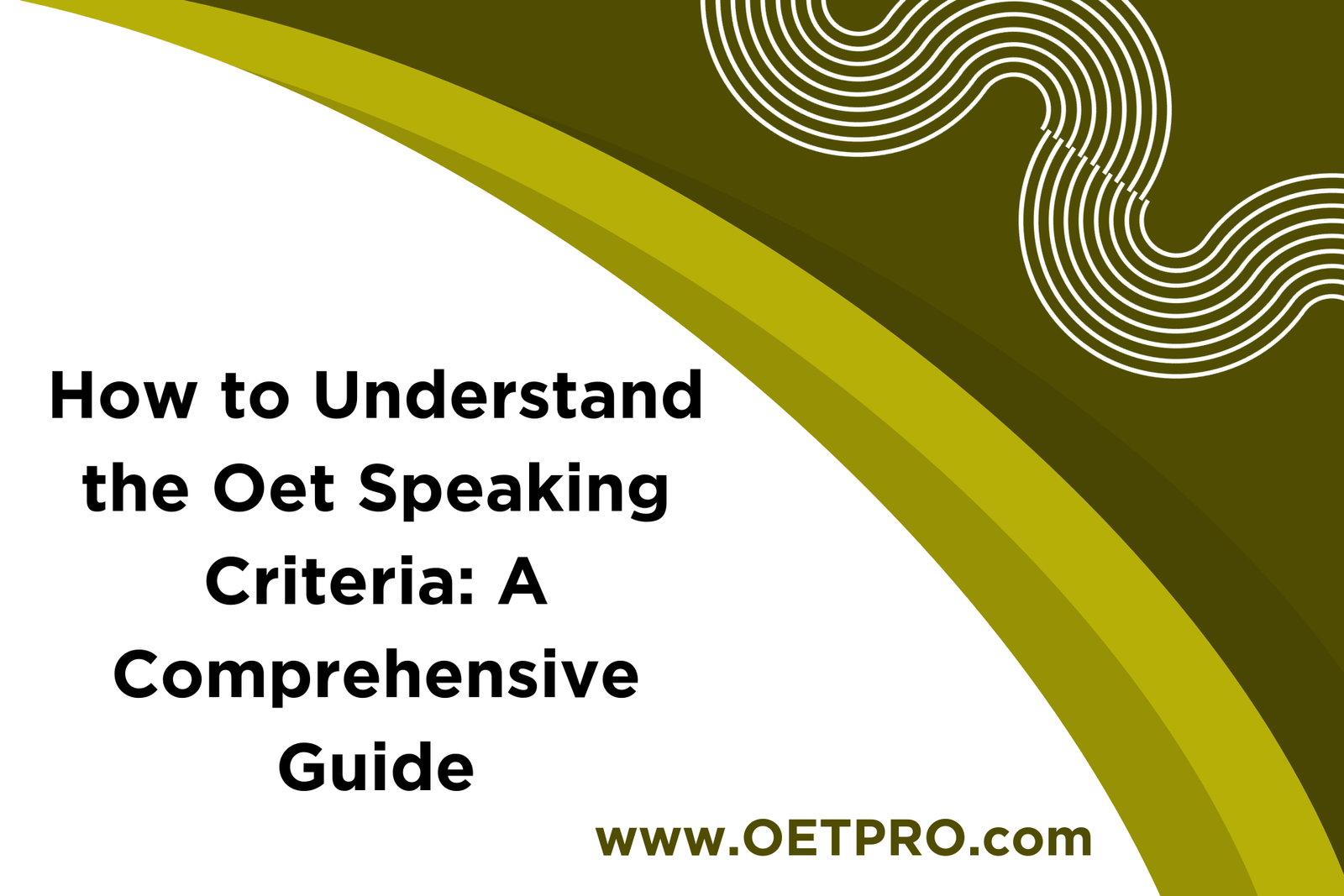
How to Understand the Oet Speaking Criteria A Comprehensive Guide
The Occupational English Test (OET) has become an important way to measure language skills in today’s globalised healthcare world. Many medical professionals move to English-speaking countries for work, and the OET helps assess how well they can communicate in clinical settings.
The Speaking sub-test is one of the most crucial parts of the OET. It evaluates how well healthcare professionals can communicate with patients and colleagues in real-life medical situations.
This guide explains the OET Speaking criteria in a clear and simple way. It highlights the skills examiners look for and offers useful tips to help you perform well in this sub-test.
With a proper understanding of these criteria and consistent practice, healthcare professionals can confidently move closer to working in English-speaking healthcare environments where clear communication is essential.
Introduction
If you are a healthcare professional planning to work in an English-speaking country, you are likely preparing for the Occupational English Test (OET). Among the four sections, the Speaking sub-test plays a key role in checking your clinical communication skills.
This guide explains the OET Speaking criteria in detail and offers helpful tips to improve your performance on test day.
Overview of the OET Speaking Sub-Test
The OET Speaking sub-test mirrors real clinical interactions. You will speak with a trained interlocutor who plays the role of a patient or a patient’s relative.
The sub-test contains two parts:
1. Role Play
You receive a role-play card describing the patient’s condition and the purpose of the consultation. You must ask relevant questions, give advice, and communicate clearly and professionally.
2. Discussion
In this part, you discuss a healthcare-related topic. You will receive a card with three key points, and you need to talk about each one clearly and logically.
To succeed, you must fully understand the criteria used to assess your performance.
OET Speaking Criteria
1. Intelligibility & Fluency
This assesses how clearly you speak, how easy it is to understand you, and how smoothly you can communicate. Your accent does not matter as long as your speech is easy to follow.
To improve:
-
Practice correct pronunciation.
-
Speak clearly and at a natural speed.
-
Avoid unnecessary pauses or hesitation.
2. Appropriateness of Language
This checks if your language is suitable for healthcare settings. You must use the correct tone, professional expressions, and patient-friendly explanations.
To improve:
-
Learn essential medical vocabulary.
-
Avoid slang or casual expressions.
-
Adapt your language based on the patient’s understanding level.
3. Grammar & Expression Resources
This criterion looks at how accurately you use grammar and how effectively you express ideas.
To improve:
-
Revise common grammar structures.
-
Build a variety of sentence types.
-
Use clear, concise explanations without repetition.
4. Clinical Communication (Role-Play Performance)
This focuses on your ability to communicate as a healthcare professional in a real consultation.
To improve:
-
Actively listen to the patient.
-
Ask relevant, open-ended questions.
-
Offer advice clearly and empathetically.
5. Discussion Skills
In the discussion part, examiners check how well you explain healthcare topics.
To improve:
-
Organize your discussion by covering all points on the card.
-
Give relevant examples and personal clinical insights.
-
Respond naturally to follow-up questions.
Tips to Excel in the OET Speaking Sub-Test
Practice Regularly
Frequent practice through role plays will familiarise you with exam patterns and improve confidence.
Record Yourself
Listening to your recordings helps identify pronunciation and fluency issues.
Expand Medical Vocabulary
Learn medical terms, patient-friendly expressions, and clinical phrases used in real healthcare settings.
Simulate Real-Life Scenarios
Practice in realistic situations to improve patient-centered communication skills.
Manage Time Well
Ensure that you cover all points within the allowed time.
Stay Calm
Being nervous affects fluency. Use relaxation techniques to stay calm and confident.
Final Thoughts
The OET Speaking sub-test is a vital step for healthcare professionals planning to work in English-speaking countries. Understanding the test criteria clarity, fluency, language appropriateness, grammar, and effective communication is essential for performing well.
With consistent practice, focused preparation, and a clear understanding of what examiners expect, you can confidently move closer to your healthcare career goals. Remember, excellent communication is not just needed for the exam but is also a key skill for real clinical practice.
Questions and Answers
Q1: What is the OET Speaking sub-test?
It is a part of the OET exam that evaluates your ability to communicate in English in a healthcare setting through role-plays and discussions.
Q2: How is the OET Speaking scored?
It is scored from 0 to 450 across five criteria: pronunciation, fluency, appropriateness, resourcefulness, and intelligibility.
Q3: What is intelligibility in OET Speaking?
It refers to how clearly you speak and how easily the listener can understand you.
Q4: What is fluency?
Fluency means speaking naturally without unnecessary pauses, fillers, or repetition.
Q5: What does appropriateness mean?
It checks whether your language fits the healthcare situation and role-play context.
Q6: What is resourcefulness?
It measures how well you can use appropriate language to express ideas or handle unexpected terms.
Q7: What does pronunciation include?
It includes correct sounds, word stress, intonation, and overall clarity.
Q8: How can I prepare for OET Speaking?
Practice role-plays, learn medical vocabulary, and use OET materials for structured preparation.
Q9: How can I improve my score?
Record your practice sessions, get feedback from tutors, and work on weak areas consistently.
Q10: Can I retake the OET Speaking exam?
Yes, you can retake it by paying the exam fee again.
Q11: Can I request a re-mark?
Yes, you can apply for a re-mark if you believe your score is incorrect.
Q12: What resources can I use?
Use OET books, online courses, sample role-plays, and guidance from OET tutors.